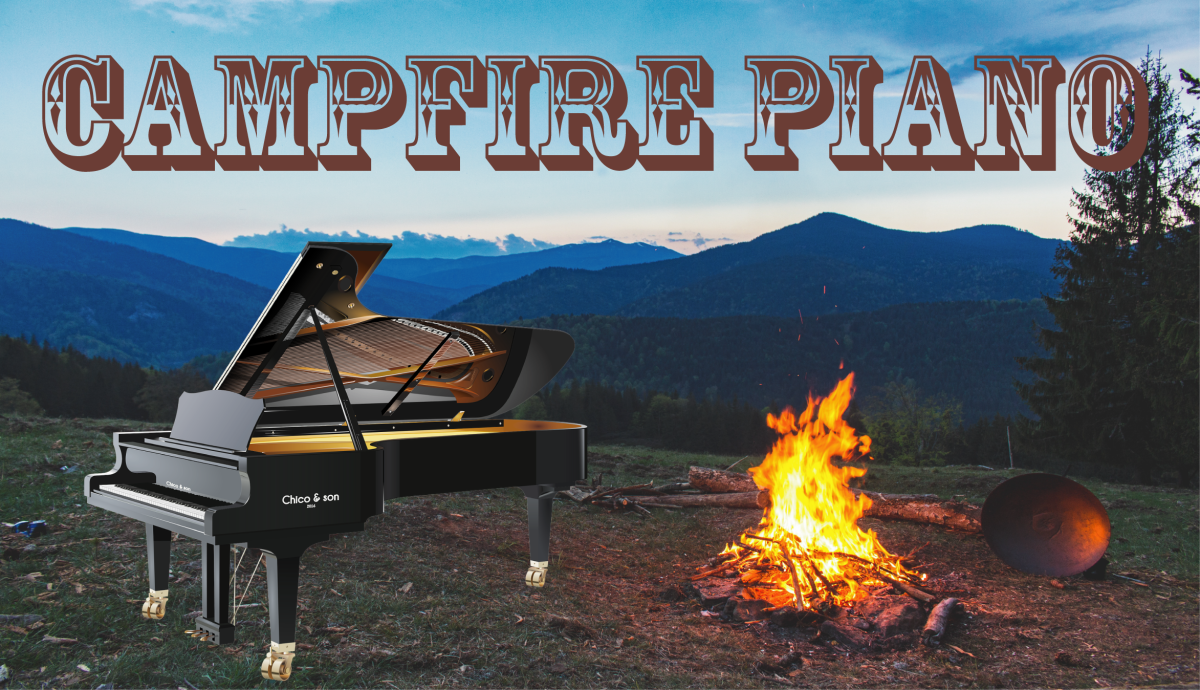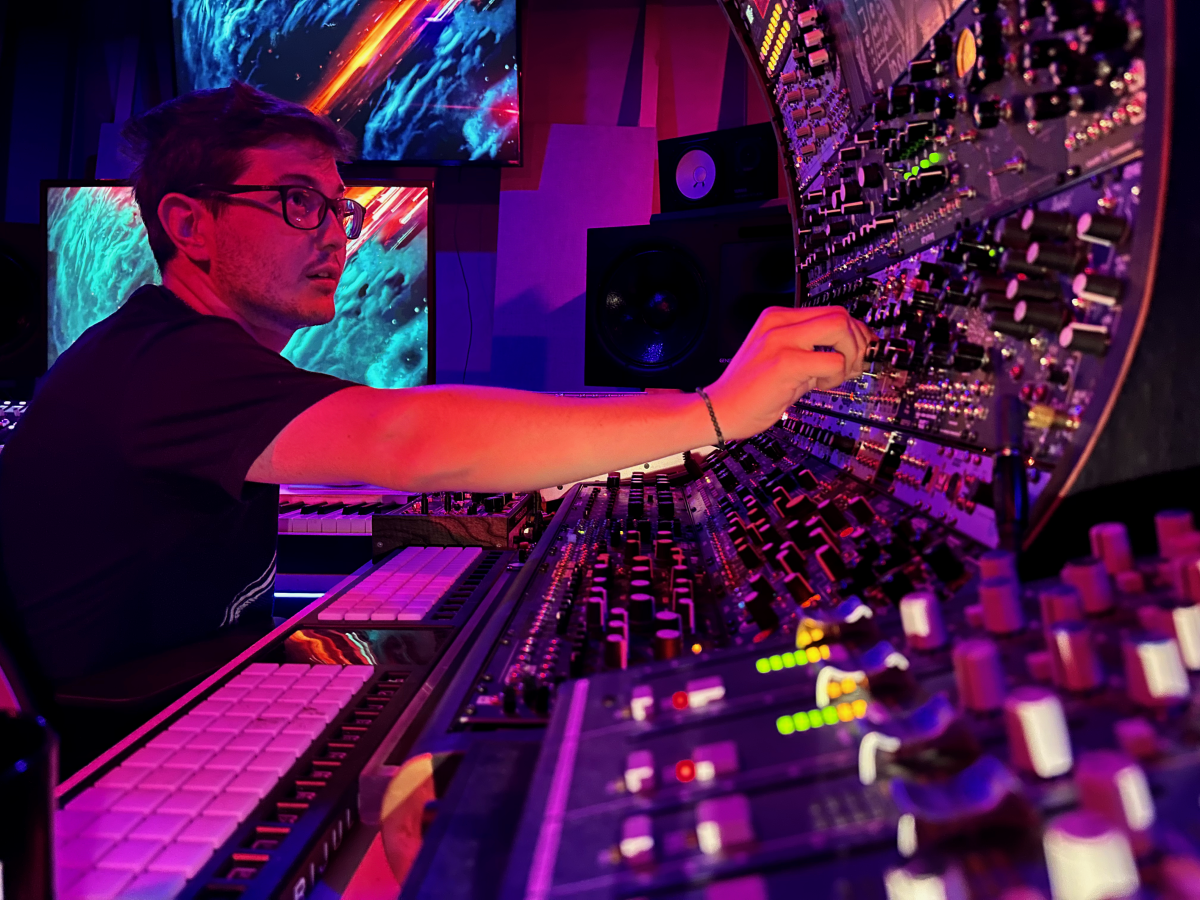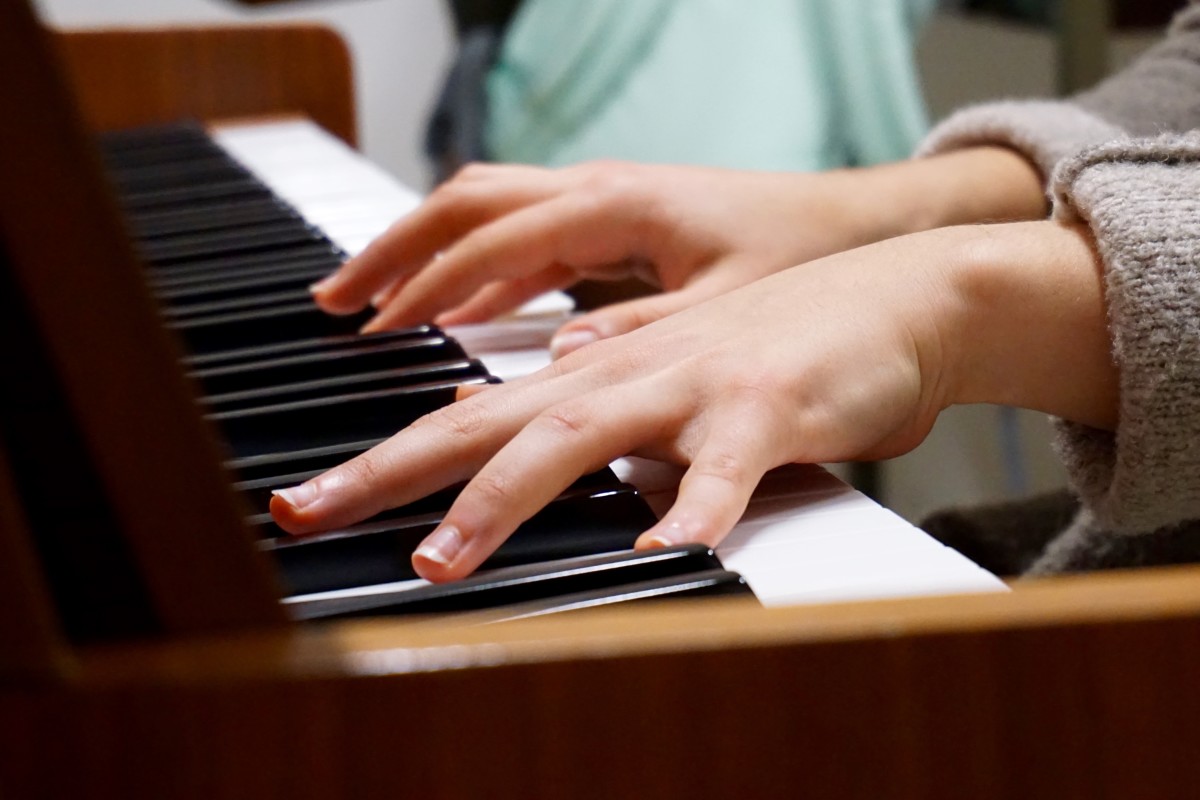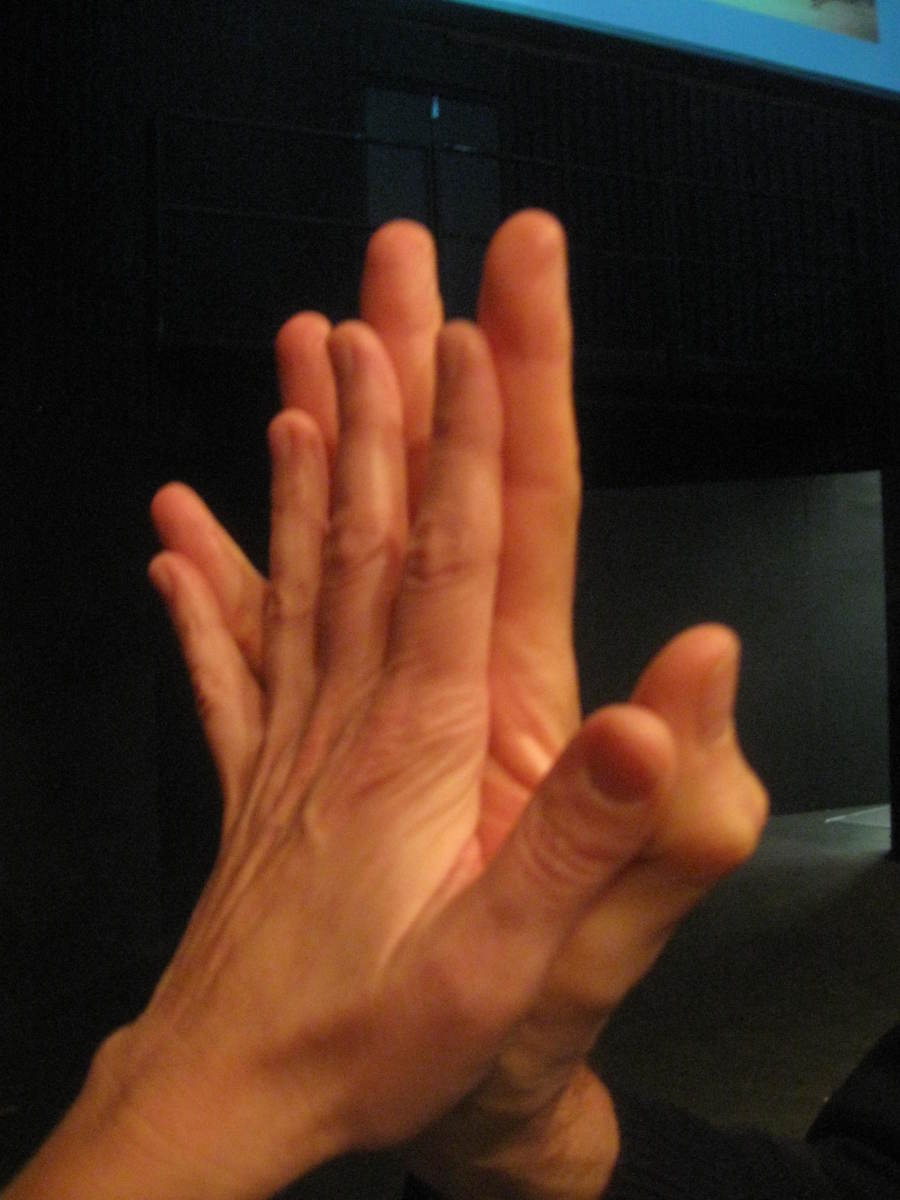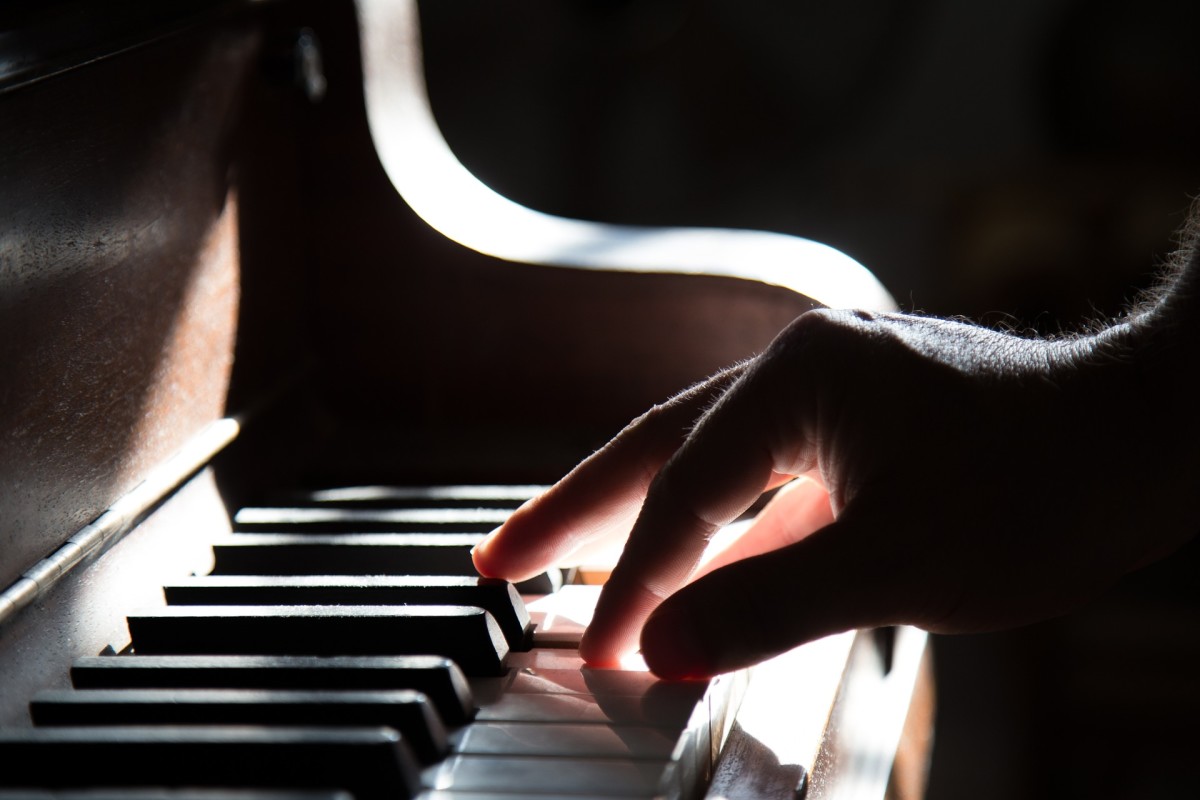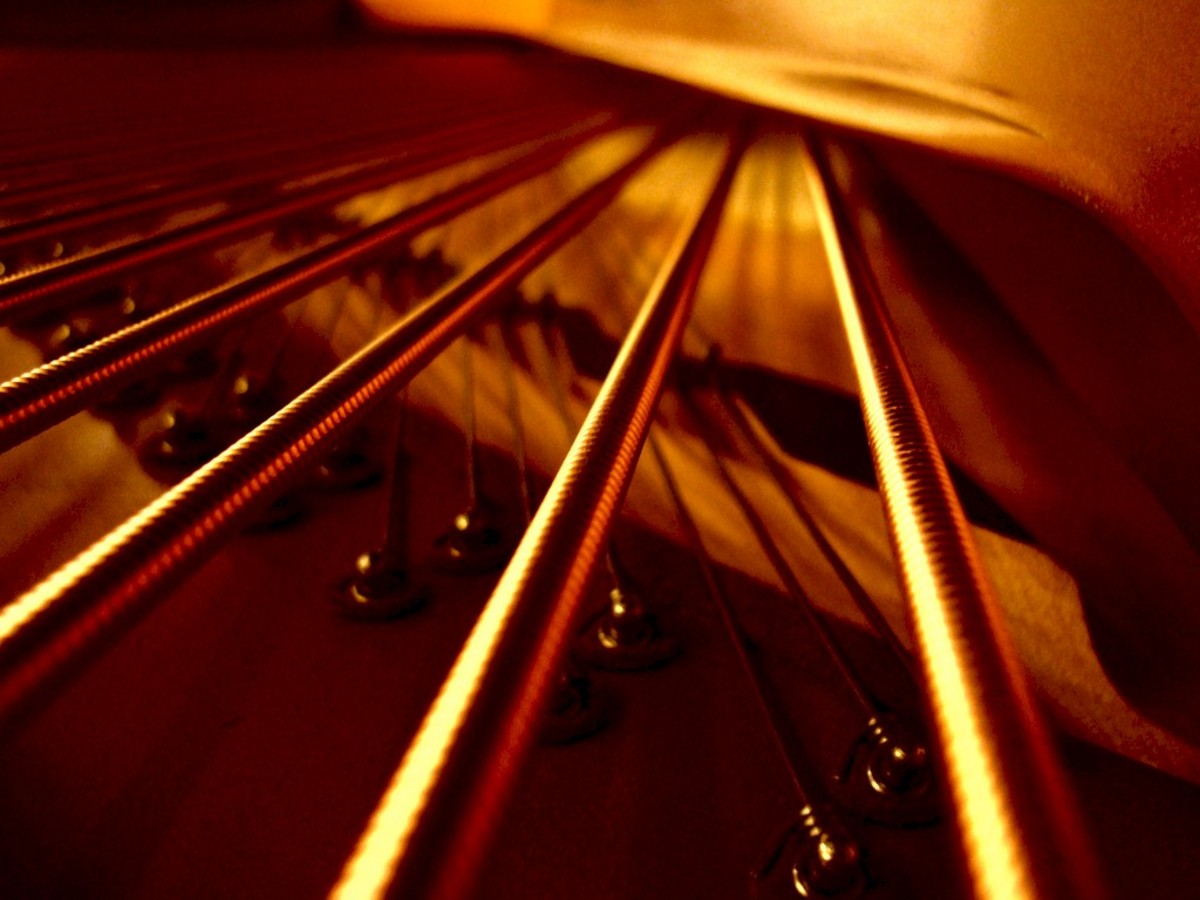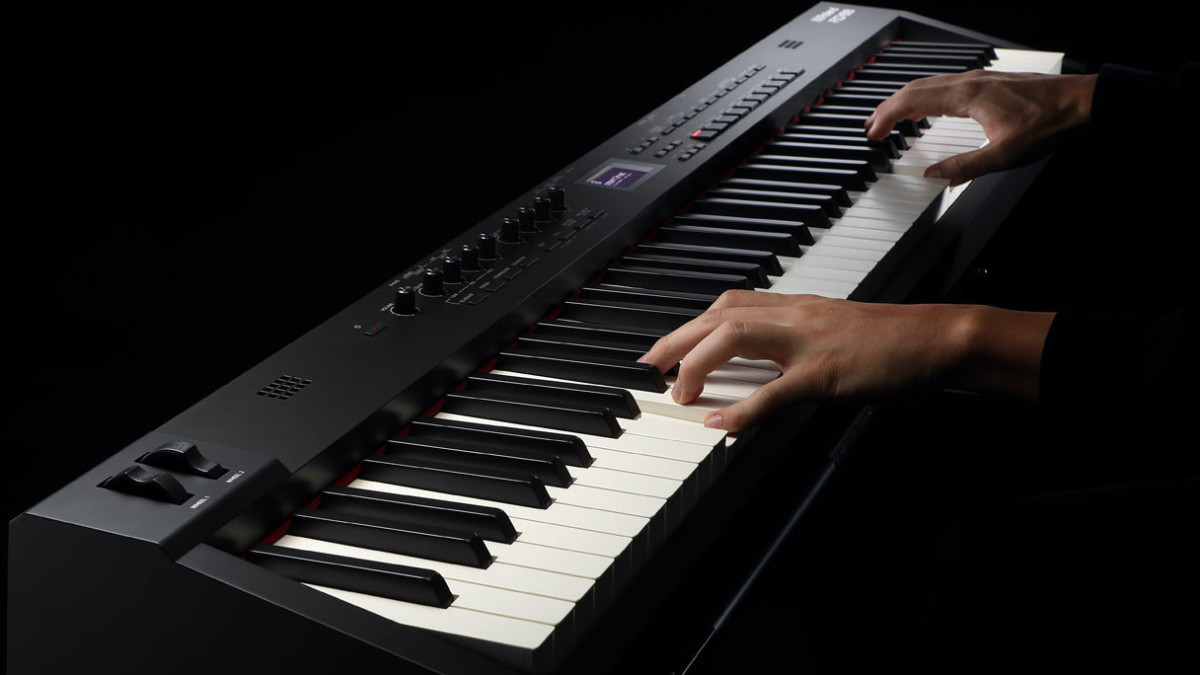Hands On Review of the Yamaha DGX-640 Digital Grand Piano
My brand new 640:
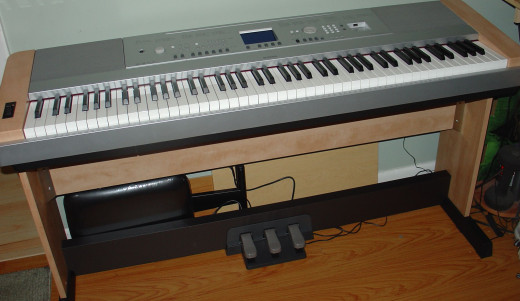
How To Give Your Wife a Heart Attack
I love Southern Gospel and Folk Music. My sound is fairly authentic, since I don't read sheet music and learned how to play by ear in a 'down-home' environment. Nearly a year ago now, I walked up to Monique, looked her in the eye, and said "We need to talk about spending money."
Not the Grouchy Husband Routine
Apparently, that wasn't the best way to tell her I wanted to buy an expensive digital grand piano. She immediately assumed I was going to do the grouchy husband thing and fuss about the budget instead.
Instead, I was going to do the "please can I have it, because I've wanted one my whole life" thing. Which is the truth, and the price had just dropped significantly on Amazon... I didn't want to miss the deal.
Anyway, it worked out. Monique said she had planned to get it for me for Christmas because she knew how much I've been wanting a digital piano. She let me get my Christmas gift early.
Just me, having some fun
I've been gone a long time
Note: If you've read my previous hubs, you may have noticed a long absence. Blame the piano. I have more projects than time, and just haven't been here in a while. Promised a friend (Hi Audrey!) that this would be my next hub... just didn't think it would take this long. :^)
Choosing a Digital Piano - Too much, or not enough?
Back to the piano. It's a Yamaha DGX-640 Digital Grand Piano. Choosing it was a matter of great deliberation. There's a fine line between 'not enough piano' and 'too expensive for me.' The DGX has a lot of bells and whistles (literally) that weren't absolutely necessary. A less expensive piano without so many extras would have done the job.
It's a matter of room to grow. In a year... two years... 5 years... at some point, a basic digital piano might not be enough. There needs to be a balance between a realistic price, yet something that will grow with me.
A short and shaky view of me opening up the 640
Don't be afraid to make a decision
At the time, the DGX-640 hit the sweet spot. Way more piano than I needed, yet with a lot of bang for the buck. Cost-efficiency. The decision was also tempered by the cost of technology depreciation. Knowing that it would be replaced by something newer, better, or cheaper. Or that the price might drop soon. That kind of thinking can paralyze you.
So I made the best choice possible, and committed to it.
Smaller than an acoustic... still needs room
This is a full-sized digital piano. There are 88 keys, with weighted action. I don't think Monique truly understood the amount of room the 640 takes up. It's 55 inches long, and weighs around 45 pounds. We're talking about nearly 5 feet of space. Most of our walls are covered with bookshelves and furniture. If you decide to get a full-size digital, that's something to bear in mind. It takes up less space than, say, a baby grand. Or even a studio piano. But it still requires a place to stay.
That said, try stuffing a regular piano in a carry case and hauling it out to your car. Not gonna happen.
Barely out of the box and already playing it
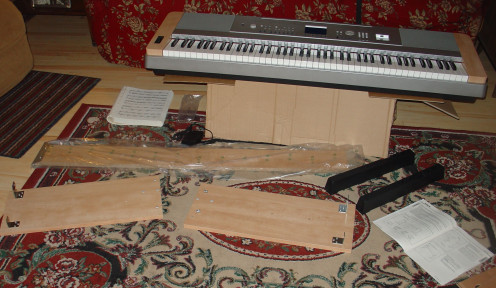
Why I like my DGX-640
There are way too many features to do an in-depth review here. As a matter of fact, in all honesty I'm not qualified to do a full detailed review. There are plenty of features I've never used, or only used once while reading the manual.
Rather, I want to tell you why I like my 640, and how I use it.
When it first arrived, sure, the gadget-geekery blew my mind. All the cool voices, the background rhythms and harmonies, the chording... it can make a one-finger wonder turn into a full-scale band. The dgx-640 can make just about any beginner sound amazing. Much of the initial getting-to-know-you time was spent trying all the voices.
Staying with the basics, for now
I grew up on a normal, small, studio piano. Eventually, when the 'new' wore off, I found myself going back to the grand piano voice, with no extra features. This is fine. It's got a lovely grand piano tone, especially the deeper notes. After close to a year, I still play it nearly every day. In plain old, sounds-like-a-piano mode. Eventually I'll play with the other voices again. No hurry. They'll be waiting.
Pound Puppies with extra features
More than 500 voices
For reference sake, some of the fancy voices sound pretty darn good. Especially the organ and guitar voices. If you're a professional musician looking to replicate authentic sounds of over 500 different instruments, all I can say is try before you buy - it may not meet your needs. And yes, that's 500 plus voices. The variations of organs, guitars, and of course piano sounds, strike me as very realistic. Not so much some of the more esoteric instruments.
The video to the right is one of the few where I used some of the extra features.
Bottom line: Some voices are excellent, but not all.
Highest Priority- The Headphone Jack!
To me, it's mainly a piano... why not just stick with my studio piano? The biggest single factor was the headphone jack. I wanted a 'real' piano. One that felt 'right' but wouldn't bother anybody else. In our home, it's hard to find a time to play that won't bother... or wake up... someone. I still play the studio piano at times, but I can play the digital grand ANY time. Headphones. Very important to the people you share space with.
Also, the keys are full sized, and weighted. Heavier touch on the lower keys, lighter touch on the higher notes. Let me be clear... it does NOT have the heft of keys on an acoustic piano. The keys are very easy to press down... maybe too easy. But it shares a similar 'feel'. Practice on the digital grand transfers easily to an acoustic piano. It accommodates my playstyle. The 640 also has 64-note polyphony, which means I can use ALL my fingers and the sustain pedal without dropping notes. If you need more than 64 notes, there are digital pianos with more, but 64 seems just fine.
The Difference between Electronic Keyboard and Digital Piano
Have you ever played an electronic keyboard? You have to adapt significantly. It has very little in common with a piano. You can't just sit down an play a standard keyboard like you would an acoustic piano.
That's the distinction. Digital pianos are more 'piano'. To the touch, to the style, to the heart and soul of how I play, the 640 pleases me completely. It just feels right.
Record and Playback Songs
On a more technical note, I also like the ability to record and playback songs on it. It can store up to 5 user-recorded songs at the push of a button. This feature lets me get clean audio for YouTube videos. Recording videos in a house full of dogs, phones, and random noises, that's a really big deal.
After I learned how to sync clean audio to video
Clean Audio Synced to Video
Video record the song, while simultaneously using the dgx-640's on-board recording. If all goes well (sometimes it takes a few tries - I'm very nervous in front of the camera) then the recorded audio gets fed into my computer, and recorded as a WAV file. Next, it gets uploaded from the piano to the computer as a MIDI file via USB (for later use).
Then the video gets uploaded, and edited in Corel Video Studio Pro. I mute the original audio, and synchronize the WAV file. Voila! Clean audio, no background noises. Take that, noisy little chihuahua!
Midi Sheet Music in Action
Midi Sheet Music output sample

Free Sheet Music
Now back to the MIDI file. The MIDI format is how digital instruments share instructions on how to play saved songs. I use it with free software called Midi Sheet Music. This will play midi files as music (sounds VERY computerized). It also... wait for it... prints out sheet music from MIDI files!!
This is amazing, since I don't read sheet music. To me, it looks like chicken scratch, yet someone who can read sheet music can now play a song exactly the way I did it. Technology is wonderful!
In a two-step procedure, I go to Corel and create a video of Midi Sheet Music playing the song. It shows the keys to press at the top of the screen (on a little keyboard graphic), and actively scrolls the sheet music below as the song is played. This video gets posted as a 'How to play'.
Step two, I've now started printing the sheet music out. Upload them to Grace Notes. Anybody who's interested can grab the sheet music. Free. This is a 'thank you' to the very kind people who've asked for my arrangements.
Extraneous Noises
MusicSoft Downloader
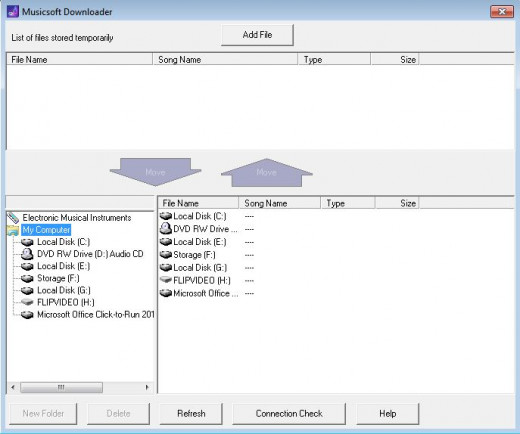
On the bad side...
The DGX isn't perfect. But my complaints have more to do with the accessories and included software, than with the actual piano. First, the foot pedals are noisy. Maybe it's just my particular ones. I got the LP-7A foot pedals. They mount firmly to the stand, which is important to me. I've had non-mounted pedals before, and they constantly slid out from under my foot.
Also, the keys clack a bit while playing. This may be my own fault, since I tend to play with enthusiasm...
It's very distracting, having to chase the foot pedal while playing, so the LP-7A appealed to me since they're attached to the stand. But the noise. It's fine, when I'm only playing for my entertainment. Not so fine when I'm recording. Fortunately, the solution is something I already do. Use the 'rec' function on the 640 while recording video, then sync the clean sound in video edit.
See the video to the side- you'll see what I mean about pedal noise.
My only other complaint is the software for transferring MIDI files from the piano to the computer. It's called "Musicsoft Downloader". Functional, but primitive. There's no option to duplicate the file upon transfer. When moving a midi file from piano to computer, the original file in the 640's memory is erased. So if you want to keep the file in the 640 for any reason, you have to re-transfer it from the computer back to the piano.
Musicsoft does the job, but could make it easier. Neither complaint is the 640's fault. And neither is a deal-breaker.
The Built-In Speakers
This isn't exactly a complaint, and it's certainly not a flaw, but I do want to note the built-in speakers. They're pretty loud in a small room, but they audio could stand improvement. If you want a truly rich and vibrant audio coming from the piano, you'll want to buy external speakers.
I have a pair of M-Audio speakers. The piano audio goes straight to my computer, and from the computer out to the speakers. My entire system benefits from the quality speakers. Plus it has the added benefit of being able to merge live playing with computer audio. I can practice along with songs on Youtube, and balance the audio mix to suit my mood.
They make a big different in sound quality. Before getting external speakers, people would say the dgx-640 "sounds pretty good." After getting the external speakers, it was more like "Wow, that sounds just like a real piano!"
Still Love My DGX-640
I've barely scratched the surface of everything you can do with the Yamaha DGX-640 Digital Grand Piano. But this is how I use mine. Nearly a year later, I still love it, play it, and share my videos to Youtube.
The prices have continued to drop, so you can get this marvel for a lot less than I paid. That's technology for you. Even so, mine is worth every penny it cost.

